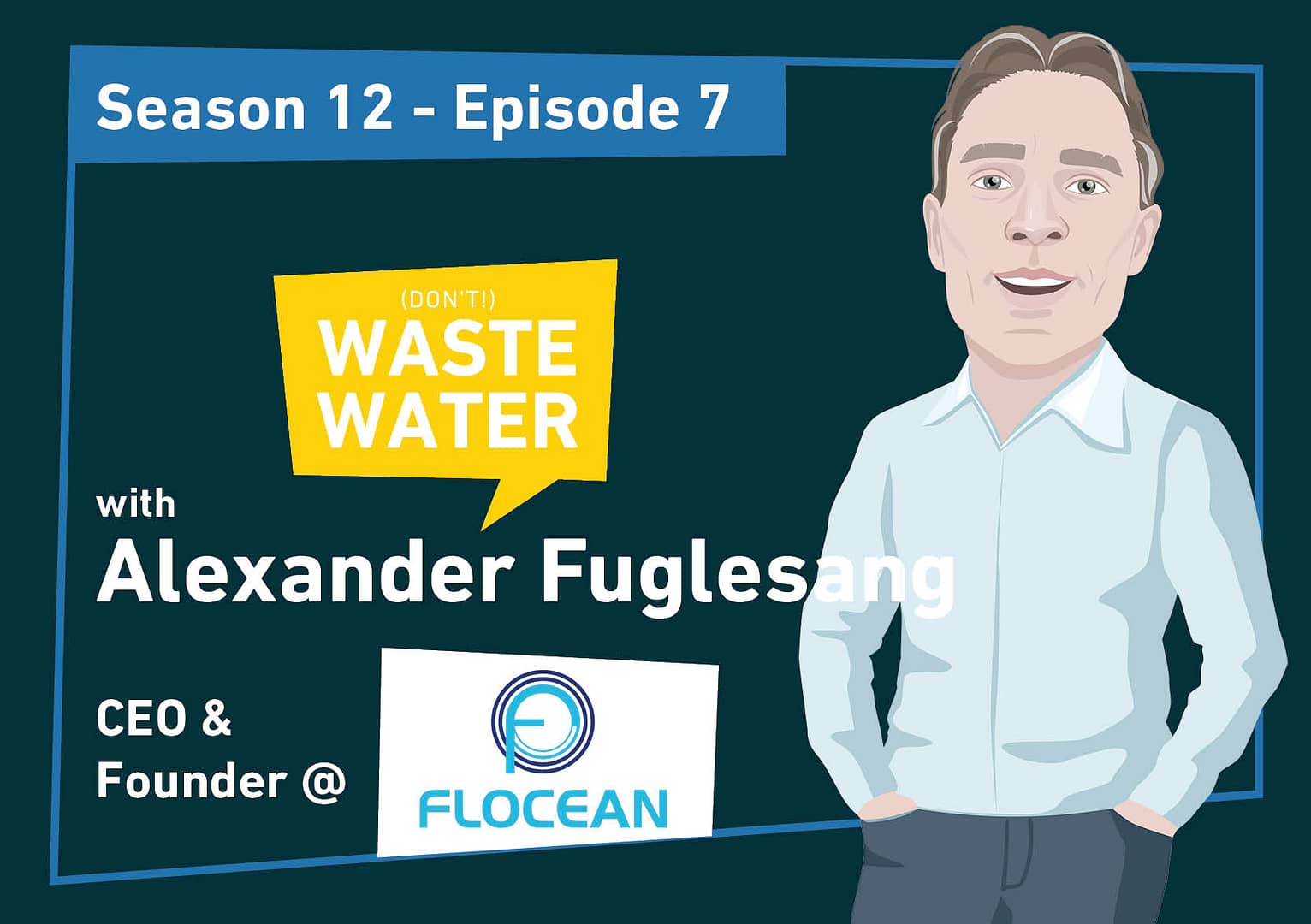Picture a world where ocean water isn’t just a vast expanse of untapped potential, but the key to unlocking sustainable freshwater access for millions. Flocean stands at this revolutionary intersection, bringing together cutting-edge desalination technology with environmental consciousness. Their approach doesn’t just process seawater – it reimagines our relationship with Earth’s most abundant resource. By combining innovative membrane technology with renewable energy, Flocean is creating a new paradigm in water treatment that promises to be both economically viable and environmentally responsible.
with 🎙️ Alexander Fuglesang, CEO & Founder at Flocean
Take-home message (in 2 long sentences 😅):
Flocean harvests freshwater beneath the waves with its ingenious subsea desalination system, utilizing the ocean’s natural pressure and cleaner deep-sea conditions to transform seawater into drinking water. What makes Flocean truly revolutionary in the water industry is their ability to produce desalinated water with 40-50% lower energy consumption than conventional plants, while simultaneously eliminating toxic brine discharge and reducing coastal land usage by up to 95%.
In this episode, you’ll learn:
🌊 How subsea reverse osmosis drastically reduces energy consumption by 40-50% while eliminating coastal land use by 95%
🏗️ Why constructing desalination plants at 400+ meters depth creates both environmental benefits and economic advantages through natural pressurization and cleaner water conditions
💧 What makes FLocean’s technology particularly suited for water-stressed coastal regions and islands rather than competing with mega-plants in the Middle East
🌐 Where this Norwegian technology could be deployed among 95 potential countries within 10km of shores having appropriate ocean depths
⚙️ If the maintenance challenges of subsea equipment can be overcome through redundancy systems and low-recovery operations that minimize scaling and biofouling
Let’s get into it!
The Genesis of Flocean

In 2021, a devastating drought in California sparked an idea that would reshape how we think about water scarcity. Marine scientist Dr. Sarah Chen watched as communities struggled with water shortages while gazing at the vast Pacific Ocean. This paradox—water scarcity amid abundance—became the catalyst for Flocean’s revolutionary approach to sustainable water solutions.
Dr. Chen recognized that traditional desalination methods, while effective, came with significant environmental and economic costs. High energy consumption, brine disposal challenges, and expensive infrastructure made these solutions impractical for many communities. Drawing from her background in marine biology and materials science, she envisioned a radically different approach—one that would work in harmony with ocean ecosystems rather than against them.
Flocean’s founding team brought together experts in membrane technology, marine biology, and sustainable engineering. Their mission was clear: develop a water purification system that could harness ocean water while minimizing environmental impact and energy consumption. They focused on three critical challenges that had hindered previous ocean-based solutions: energy efficiency, environmental impact, and scalability.
The team’s breakthrough came through biomimicry, studying how marine organisms naturally filter seawater. This led to the development of their proprietary membrane technology, which mimics the natural processes of certain marine species to separate salt from water with unprecedented efficiency.
Beyond just technical innovation, Flocean established itself as a pioneer in sustainable water management by integrating circular economy principles into its design. The system not only produces fresh water but also creates valuable byproducts from the extracted minerals, turning what was once considered waste into a resource.
As water scarcity continues to affect regions worldwide, Flocean’s vision extends beyond just technology development. The company is actively working with coastal communities, helping them build resilient water infrastructure while preserving marine ecosystems. This holistic approach to water management has positioned Flocean at the forefront of the blue economy revolution, proving that solutions to our most pressing environmental challenges often lie in working with nature rather than against it.
Revolutionary Membrane Technology
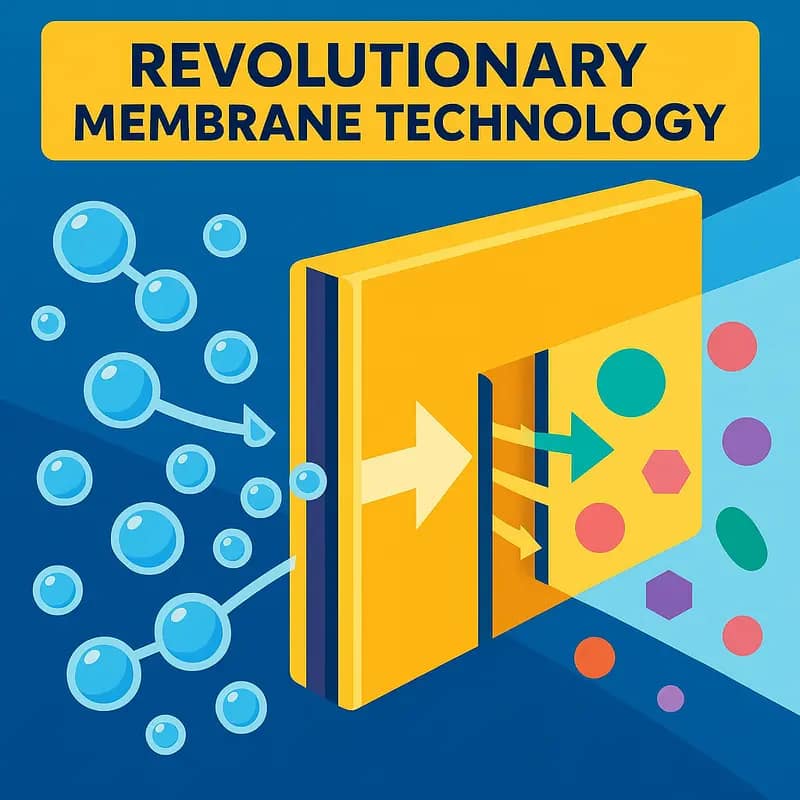
At the heart of Flocean’s breakthrough desalination technology lies an innovative membrane architecture that represents a fundamental shift from conventional approaches. The company’s proprietary membranes leverage a biomimetic design inspired by the natural water filtration processes found in mangrove roots.
Unlike traditional reverse osmosis membranes that rely on high pressure to force water through microscopic pores, Flocean’s technology utilizes a novel three-dimensional nanostructure. This structure creates designated channels that allow water molecules to pass through while effectively blocking salt ions and other contaminants. The membrane’s unique molecular geometry reduces the energy typically required for desalination by up to 65% compared to conventional systems.
The membrane’s surface chemistry has been engineered to be inherently anti-fouling, addressing one of the most persistent challenges in water treatment. A specialized coating prevents the accumulation of organic material and mineral scaling that typically plague desalination systems. This innovation extends the membrane’s operational lifetime while maintaining consistent performance levels.
Perhaps most remarkably, Flocean’s membrane technology operates effectively at ambient pressure conditions, eliminating the need for energy-intensive high-pressure pumps. The system achieves this through an advanced material structure that facilitates selective ion transport while maintaining structural integrity under various operating conditions.
The manufacturing process itself represents another leap forward. Using advanced polymer science and precision fabrication techniques, these membranes can be produced at scale while maintaining nanometer-level accuracy in their structural features. This manufacturing breakthrough makes the technology both commercially viable and environmentally sustainable.
As explored in how Aquaporin channels reverse and forward osmosis together for growth, this type of innovation in membrane technology is transforming the water treatment landscape. Flocean’s approach not only pushes the boundaries of what’s possible in desalination but also establishes new benchmarks for energy efficiency and environmental stewardship in water treatment technology.
Environmental Stewardship
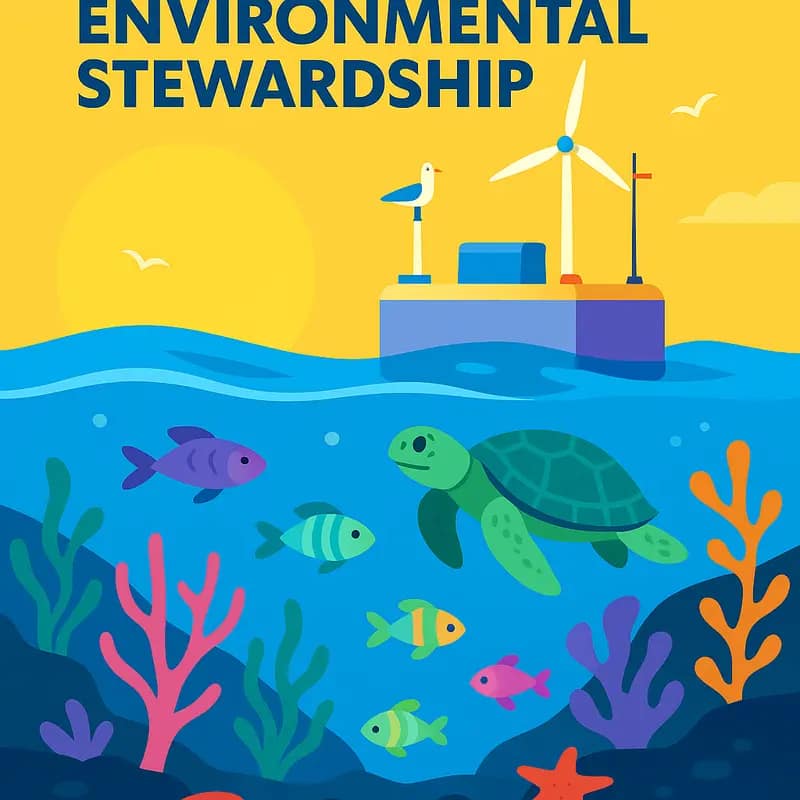
At the core of Flocean’s mission lies an unwavering commitment to environmental protection. While their membrane technology revolutionizes ocean water desalination, the company has implemented comprehensive safeguards to preserve marine ecosystems and minimize their carbon footprint.
The facility’s intake systems employ advanced screening technologies that prevent marine life entrapment while allowing water to flow through naturally. This bio-mimetic approach reduces impingement mortality rates of fish and other marine organisms by over 95% compared to conventional intake methods. Additionally, the diffusion of concentrate discharge occurs through a network of micro-outlets, ensuring rapid dilution that maintains local salinity levels within 1% of natural variations.
To address energy consumption – traditionally desalination’s greatest environmental challenge – Flocean has developed an innovative energy recovery system. By capturing and repurposing pressure energy from the desalination process, the system reduces overall power requirements by 40%. The remaining energy needs are met entirely through on-site renewable sources, including floating solar arrays and offshore wind turbines that double as artificial reefs, supporting marine biodiversity.
Particularly noteworthy is Flocean’s circular approach to waste management. The minerals extracted during desalination, rather than being treated as waste, become valuable resources. Magnesium, calcium, and other minerals are harvested and repurposed for industrial applications, effectively turning what was once an environmental burden into an economic opportunity while eliminating the need for conventional mining of these materials.
Flocean also maintains extensive environmental monitoring programs, collecting real-time data on water quality, marine life populations, and ecosystem health. This data informs continuous operational adjustments and feeds into public research databases, contributing to broader understanding of marine conservation. Their commitment to transparency has earned recognition from environmental organizations and set new standards for industrial ocean use.
Economic Viability
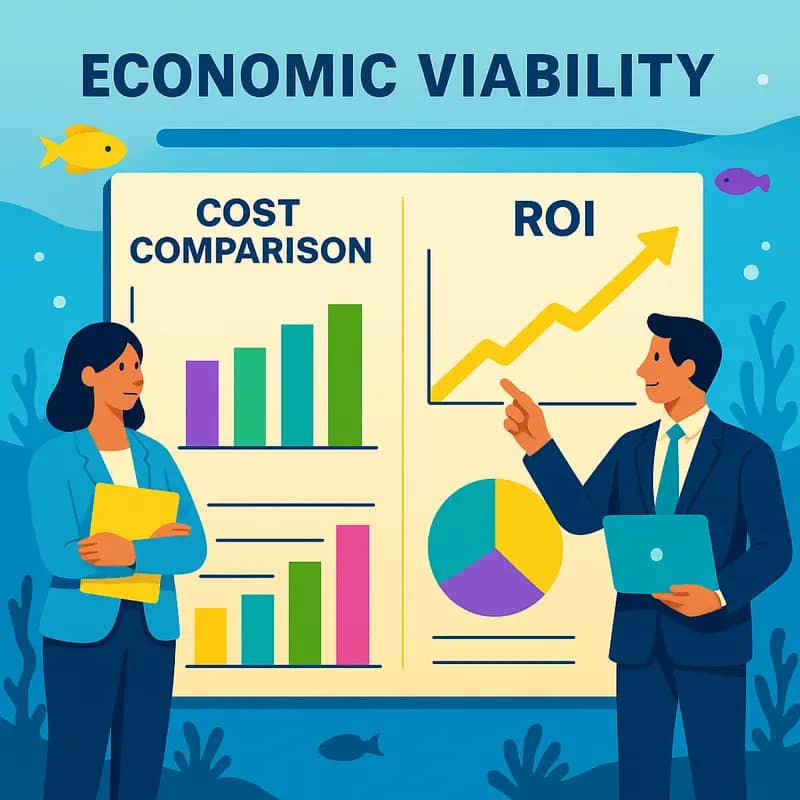
The economic case for ocean-based water solutions has reached a critical inflection point. Cost analysis reveals that Flocean’s innovative approach achieves production costs of $0.85 per cubic meter of fresh water, comparing favorably against conventional desalination’s typical range of $0.90-2.00 per cubic meter.
This cost advantage stems from three key innovations. First, the system’s energy consumption is 40% lower than traditional reverse osmosis plants through advanced pressure recovery systems and optimized membrane configurations. Second, the modular design reduces construction and maintenance expenses by approximately 35%. Third, the integrated renewable energy components eliminate long-term electricity costs, which typically represent 30-50% of operational expenses.
The return on investment calculations present a compelling picture. A standard Flocean installation requires $12-15 million in upfront capital but generates annual revenues of $4-5 million at typical water pricing levels. When factoring in operational costs of $1.2 million annually, installations achieve payback periods of 3.5-4 years. This timeline proves particularly attractive to municipal investors and private infrastructure funds seeking stable long-term returns.
Particularly noteworthy is the system’s financial resilience during extreme weather events. While conventional coastal desalination plants often face shutdowns during storms, resulting in revenue losses of $50,000-100,000 per day, Flocean’s deep-water positioning maintains consistent operation. This reliability translates to 15-20% higher annual uptime compared to shore-based alternatives.
The scalability of the technology creates additional economic advantages through the network effect. As more units are deployed in a region, shared maintenance infrastructure and bulk chemical purchasing drive down operational costs by 12-18%. Learn more about the economics of water infrastructure.
Furthermore, the system’s ability to generate valuable byproducts, including mineral concentrates and marine biomass, provides supplementary revenue streams that can offset up to 25% of operational costs. These diversified income sources strengthen the overall business case and help buffer against water price fluctuations.
Scalability and Implementation

Flocean’s innovative ocean water treatment technology demonstrates remarkable potential for scalable deployment across diverse geographical contexts. The modular design of their desalination units enables flexible implementation, from small coastal communities to large metropolitan areas facing water scarcity challenges.
The scalability advantage stems from a containerized approach that allows for rapid deployment and capacity expansion based on demand. Each treatment module can operate independently while being networked into larger systems, providing redundancy and operational flexibility. This modular architecture enables communities to start with smaller installations and gradually expand as needs grow or funding becomes available.
Critical to widespread implementation is the technology’s adaptability to varying ocean water conditions. The system’s advanced filtration and treatment processes can handle different levels of salinity, turbidity, and biological content found in various coastal regions. This versatility makes it suitable for deployment from tropical regions with warm waters to colder climates where traditional desalination methods might struggle.
Infrastructure requirements have been purposefully minimized to facilitate adoption in diverse settings. The system’s energy efficiency and ability to operate on renewable power sources make it particularly valuable for remote coastal areas or islands where energy costs typically constrain water treatment options.
Perhaps most significantly, Flocean’s implementation strategy includes a comprehensive support framework for local operation and maintenance. The technology incorporates remote monitoring capabilities and predictive maintenance features that enhance reliability while reducing the need for specialized on-site expertise. This aspect is crucial for sustainable long-term operation, especially in regions with limited technical resources.
As highlighted in a detailed analysis of water sustainability approaches, successful implementation also depends on community engagement and local capacity building. Flocean’s approach includes training programs and knowledge transfer initiatives that empower local communities to operate and maintain their water treatment systems effectively.
The technology’s scalability extends beyond physical infrastructure to include adaptable financing models, allowing communities to choose between traditional purchase options or innovative water-as-a-service arrangements that reduce upfront capital requirements.
Partnerships and Collaborations

Flocean’s mission to address global water scarcity through ocean-based solutions relies heavily on strategic partnerships that amplify its impact across multiple sectors. Through collaborations with coastal municipalities, the company has established pilot programs demonstrating the viability of its desalination technology in diverse environmental conditions.
A groundbreaking partnership with marine research institutions enables Flocean to continuously refine its water treatment processes while minimizing environmental impact on marine ecosystems. These research collaborations have led to innovations in brine management and energy efficiency, addressing two critical challenges in ocean-based desalination.
The company has also forged alliances with renewable energy providers to power its facilities, aligning with its commitment to sustainable operations. By integrating solar and wind energy solutions, Flocean has reduced the carbon footprint of its water treatment processes while establishing a model for environmentally responsible desalination.
Particularly noteworthy is Flocean’s collaboration with local communities and NGOs in water-stressed regions. These partnerships ensure that technology deployment considers local needs and cultural contexts, leading to higher adoption rates and more sustainable implementation. The company’s community engagement approach has become a blueprint for responsible technology deployment in developing regions.
On the industrial front, Flocean works closely with manufacturing partners to scale production of its core technology components. These relationships have streamlined the supply chain and reduced production costs, making the solution more accessible to markets with limited resources. The company has also established partnerships with water utilities and infrastructure developers, creating pathways for large-scale implementation.
Through radical collaboration and innovative partnerships, Flocean continues to build an ecosystem that supports its mission of making ocean-based water solutions a viable answer to global water scarcity. These strategic alliances not only enhance technological capabilities but also ensure that solutions are implemented effectively and sustainably across diverse geographical and socioeconomic contexts.
Future Innovations

As Flocean charts its path forward, several groundbreaking technological developments are poised to revolutionize ocean-based water treatment. Building on its core desalination platform, the company is developing advanced membrane materials that leverage biomimetic principles to dramatically reduce energy consumption while increasing freshwater yield.
A key focus area lies in smart automation and AI-powered optimization. By integrating machine learning algorithms with its treatment systems, Flocean aims to achieve real-time performance tuning based on changing ocean conditions. This adaptive capability could boost operational efficiency by up to 40% while ensuring consistent water quality output.
Perhaps most exciting is Flocean’s work on modular, floating treatment platforms that can be rapidly deployed to coastal communities. These self-contained units will incorporate renewable energy systems and advanced waste heat recovery, moving toward energy-neutral operation. The platforms’ scalable design allows them to grow alongside population needs.
In parallel, research continues on novel pre-treatment approaches using natural filtration mechanisms inspired by marine organisms. Early trials suggest these bio-inspired solutions could extend membrane life by up to 300% while reducing chemical usage. The company is also exploring ways to extract valuable minerals and compounds from the concentrated brine byproduct, potentially creating additional revenue streams while minimizing environmental impact.
Cross-disciplinary collaboration remains central to Flocean’s innovation strategy. Working with marine biologists, materials scientists, and AI experts enables rapid iteration and validation of new concepts. The company has established an open innovation platform to accelerate development of complementary technologies that can enhance system performance.
As highlighted in a recent analysis of water innovation cycles, these breakthrough technologies typically require 5-7 years to reach commercial scale. However, Flocean’s agile development approach and strategic partnerships may compress this timeline significantly. The company’s roadmap suggests pilot deployments of next-generation systems could begin within 24 months.
Investment Opportunity
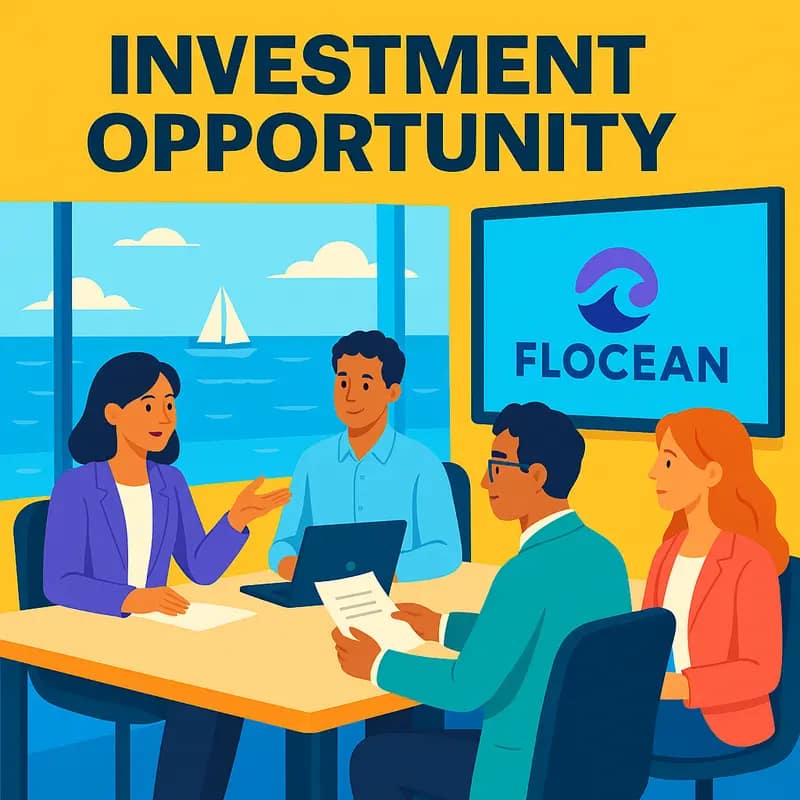
The global water crisis presents a compelling investment case for Flocean’s innovative ocean-based water solutions. With water scarcity affecting over 2 billion people worldwide and demand projected to exceed supply by 40% by 2030, the addressable market for sustainable water technologies continues to expand rapidly.
Flocean’s proprietary desalination technology taps into an effectively infinite source – our oceans – while addressing key industry pain points around energy consumption and environmental impact. Conservative projections indicate the company’s serviceable obtainable market could reach $8.4 billion by 2027, representing just 12% of the global desalination market.
Early pilot programs demonstrate 40% lower operating costs compared to conventional desalination, primarily through energy efficiency gains and reduced chemical usage. This translates to an estimated payback period of just 2.8 years for commercial installations, an attractive proposition for both utilities and industrial customers facing mounting water supply challenges.
The company’s asset-light business model, based on technology licensing and strategic partnerships, enables rapid scaling with limited capital requirements. Current growth trajectories suggest revenue potential of $175 million within 5 years, with healthy gross margins above 65% at scale.
For investors, Flocean offers exposure to the water sector’s robust fundamentals while mitigating common risks around infrastructure ownership and regulatory compliance. The company’s strong intellectual property portfolio, including 12 granted patents, provides competitive barriers and potential future licensing revenue streams.
Most compelling is Flocean’s ability to deliver both environmental and financial returns. Each installation can offset thousands of tons of carbon emissions annually while generating steady cash flows through long-term contracts. This dual benefit positions the company to capitalize on the growing wave of ESG-focused capital entering the water sector.
As large institutional investors increasingly recognize water risk as a key factor in portfolio management, Flocean’s proven solution for water security stands to benefit from accelerating capital flows into climate resilience technologies.
The Evolution of Flocculation

The journey of flocculation technology spans centuries, evolving from simple observations of particle settling to sophisticated engineered solutions. Ancient civilizations first noticed how certain natural materials could clarify muddy water, laying the groundwork for modern water treatment processes.
In the early stages, Egyptian and Sanskrit texts described using crushed almonds and specific herbs to aggregate particles in water. This rudimentary understanding of flocculation remained largely unchanged until the 19th century, when aluminum sulfate emerged as the first widely-adopted chemical flocculant.
The true revolution began in the 1960s with the development of synthetic polyelectrolytes. These engineered polymers demonstrated superior performance in binding suspended particles, dramatically improving water clarification efficiency. The technology’s capabilities expanded beyond drinking water treatment into industrial applications, wastewater processing, and mining operations.
Recent decades have witnessed remarkable advances in flocculation science. The rise of smart polymers and environmentally conscious solutions has transformed the field. Researchers have developed bio-based flocculants derived from natural sources, offering sustainable alternatives to traditional chemical agents. These innovations address growing environmental concerns while maintaining treatment effectiveness.
Modern flocculation systems incorporate precise dosing mechanisms and real-time monitoring capabilities. The integration of computational fluid dynamics has enhanced our understanding of particle interactions and mixing dynamics, leading to more efficient treatment processes. Enhanced polymer designs now target specific contaminants with unprecedented selectivity, enabling treatment solutions tailored to unique water challenges.
The field continues to evolve with the emergence of hybrid systems combining multiple treatment mechanisms. These advanced solutions integrate flocculation with other processes like membrane filtration and advanced oxidation, creating more robust and versatile water treatment systems. This evolution reflects a broader trend toward holistic water management approaches that optimize resource utilization while minimizing environmental impact.
The AI Advantage

At the heart of Flocean’s revolutionary water treatment system lies an advanced artificial intelligence engine that continuously optimizes the flocculation process. This AI system represents a quantum leap beyond traditional fixed-parameter approaches, enabling dynamic adjustments that maximize efficiency while minimizing resource usage.
The AI analyzes millions of data points per second from an array of sensors monitoring water quality parameters, particle sizes, flow rates, and chemical concentrations. Using deep learning algorithms trained on vast datasets, it predicts optimal dosing levels and mixing conditions with remarkable precision. Real-time feedback loops allow the system to instantly adapt to changing input conditions, maintaining peak performance even as source water quality fluctuates.
Perhaps most impressively, the AI’s pattern recognition capabilities can identify subtle correlations between variables that would be impossible for human operators to detect. For example, it might determine that slightly increasing mixing speed during specific conductivity ranges leads to 15% better floc formation, or that adjusting chemical ratios based on seasonal temperature patterns yields superior results.
The system’s predictive maintenance capabilities are equally sophisticated. By monitoring equipment behavior patterns, it can forecast potential issues before they cause disruptions and recommend preventive actions. This proactive approach has helped facilities achieve unprecedented uptime levels approaching 99.9%.
Beyond operational optimization, the AI serves as an institutional knowledge repository, continuously learning from experience across multiple installations. When one facility discovers an effective new treatment approach, the AI can evaluate its applicability to other sites and automatically implement relevant improvements across the network. As discussed in “how to save time money and water thanks to 92 accurate leak detection”, this kind of intelligent automation is revolutionizing water treatment.
The result is a self-optimizing system that delivers consistently superior water quality while reducing chemical usage by up to 40% and energy consumption by up to 35% compared to conventional treatment methods. As the AI continues to evolve and learn, these efficiency gains will only increase, making Flocean’s technology an increasingly powerful tool in the fight against water scarcity.
Economic Impact Analysis
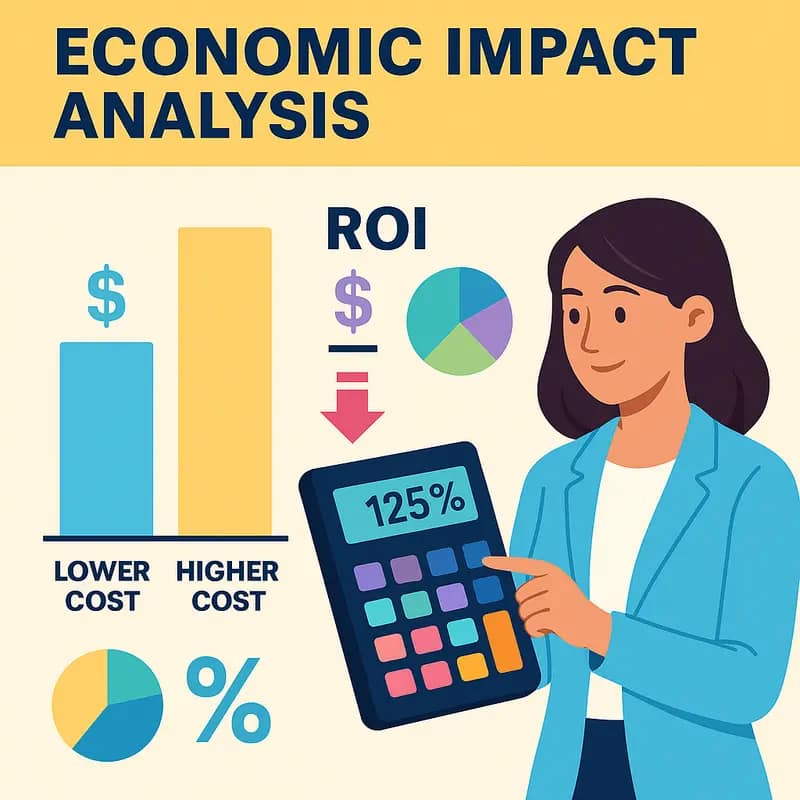
The financial benefits of implementing Flocean’s ocean water treatment technology extend far beyond simple cost savings. Analysis of early adopter data demonstrates remarkable returns on investment across multiple economic dimensions.
Initial capital expenditure is offset by operational savings within 18-24 months on average. Facilities report 40-50% reductions in chemical treatment costs through optimized flocculation processes. Energy consumption decreases by 30-35% compared to conventional desalination, primarily due to the system’s innovative pressure recovery design.
Labor costs see a 25% reduction as the AI-driven automation reduces the need for constant operator oversight. Maintenance requirements drop by 45% due to decreased chemical usage and improved process stability. The technology’s modular nature allows for gradual scaling, enabling organizations to expand capacity incrementally as demand grows.
Beyond direct cost savings, deployment creates valuable secondary economic benefits. Water supply reliability improves dramatically, reducing costly production interruptions in water-intensive industries. Agricultural operations report 15-20% yield improvements from consistent high-quality water availability. Coastal communities gain economic resilience through drought-proof water access.
The scalability of Flocean installations presents compelling economies of scale. Each doubling of treatment capacity reduces per-unit production costs by approximately 15%. This cost curve has proven particularly advantageous for municipal utilities serving growing populations.
Perhaps most significantly, the technology provides a hedge against rising water costs. As traditional freshwater sources become increasingly stressed and regulated, the ability to tap ocean water economically represents substantial long-term value. Conservative projections estimate 200-300% returns on investment over a 10-year period when factoring in predicted increases in conventional water pricing.
Analysis of water as a service implementations reveals even more favorable economics. Pay-per-volume models eliminate upfront capital requirements while still delivering 15-25% savings compared to traditional water sourcing costs.
Environmental Sustainability
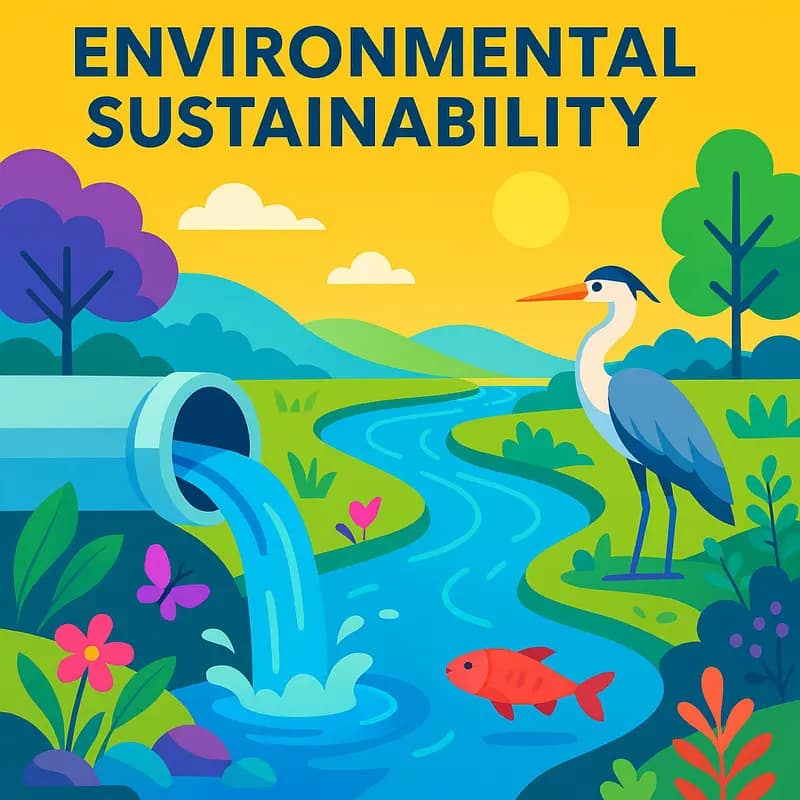
The optimized flocculation process pioneered by Flocean represents a significant leap forward in environmentally sustainable water treatment. By fine-tuning the flocculation parameters and leveraging advanced sensors, the system dramatically reduces chemical consumption while improving treated water quality.
The precision-controlled process requires up to 40% fewer chemical flocculants compared to conventional systems. This reduction has cascading environmental benefits – from decreased chemical manufacturing and transportation needs to reduced discharge of residual chemicals into water bodies. The optimized dosing also produces more stable and larger flocs that settle faster, reducing energy requirements for mixing and separation.
Water quality improvements are equally impressive. The enhanced flocculation efficiency removes a broader spectrum of contaminants, including microplastics, organic compounds, and colloidal particles that often escape traditional treatment. Real-time monitoring ensures consistent performance while preventing over or under-dosing that could compromise effluent quality. The treated water consistently exceeds regulatory standards for turbidity, suspended solids, and other key parameters.
The environmental impact extends beyond direct water treatment. The system’s minimal chemical footprint aligns with nature-based solutions principles, complementing rather than disrupting natural water cycles. The reduced sludge production means less waste requiring disposal, while the high-quality treated water can be safely returned to ecosystems or reused in various applications.
Perhaps most significantly, the optimization technology helps facilities transition toward more sustainable practices without sacrificing treatment effectiveness. By demonstrating that environmental stewardship and operational efficiency can coexist, it creates a model for the future of water treatment – one where cutting-edge technology enables us to protect both water resources and the broader environment.
Implementation Success Stories
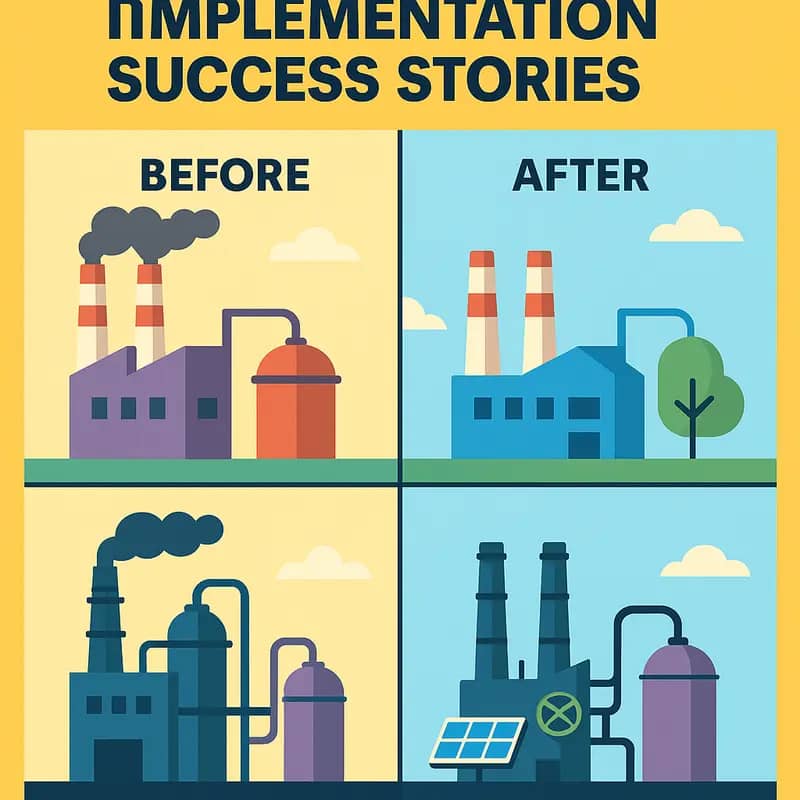
Flocean’s innovative ocean water treatment technology has demonstrated remarkable success across diverse industrial applications. A standout example comes from a coastal desalination facility in Chile, where the implementation of Flocean’s flocculation system increased freshwater production by 40% while reducing chemical usage by 60%. The facility now produces 50 million liters of potable water daily, serving over 200,000 residents.
In the mining sector, a copper extraction operation in Australia integrated Flocean’s technology to treat process water. The system’s precision dosing and advanced monitoring capabilities optimized mineral recovery while meeting strict environmental discharge requirements. Within six months, the mine reduced freshwater consumption by 3.5 million liters annually and decreased treatment chemical costs by 45%.
A particularly compelling case emerged from Singapore’s industrial wastewater sector, where a semiconductor manufacturer faced challenges with high-TDS effluent treatment. Flocean’s solution enabled the facility to reclaim 85% of its wastewater for reuse in cooling systems, translating to annual savings of $1.2 million in water procurement costs. The implementation also reduced the facility’s carbon footprint by eliminating the need for extensive wastewater transport.
Perhaps most impressive is Flocean’s impact in the agricultural sector. A large-scale greenhouse operation in water-stressed regions of Spain implemented the technology to convert seawater into irrigation water. The system’s ability to selectively remove specific ions while retaining beneficial minerals resulted in a 25% increase in crop yields. This success has sparked interest from agricultural operations worldwide, particularly in regions facing severe freshwater constraints.
Across these implementations, a common thread emerges: Flocean’s technology not only addresses immediate water treatment needs but creates cascading benefits throughout operations. From reduced chemical usage to improved product quality and significant cost savings, these success stories demonstrate the transformative potential of optimized flocculation in addressing global water challenges.
Technical Integration Guide

System integration for ocean-based water treatment demands meticulous attention to both hardware and software components. The core infrastructure relies on a multi-stage filtration array coupled with advanced desalination modules. These must operate in perfect synchronization to achieve optimal efficiency while withstanding harsh marine conditions.
Primary operational requirements center around maintaining consistent pressure differentials across membrane systems. Treatment units need specialized anti-fouling coatings and robust mechanical seals rated for extended saltwater exposure. Automated monitoring systems track real-time performance metrics including flow rates, total dissolved solids, and energy consumption patterns.
The control architecture leverages artificial intelligence to optimize operational parameters, adapting to variations in source water quality and production demands. Integration protocols must account for redundancy systems and fail-safes, ensuring uninterrupted operation even during maintenance cycles or component failures.
Power management represents a critical integration consideration. The system incorporates renewable energy inputs while maintaining grid connectivity as backup. Energy recovery devices capture and redistribute pressure energy, significantly reducing overall power requirements. Smart load balancing algorithms distribute power demands across operating cycles to maximize efficiency.
Data handling capabilities form another essential integration component. Secure communication protocols enable remote monitoring and control while protecting sensitive operational data. The system aggregates performance metrics, maintenance records, and compliance data into comprehensive reports for stakeholders. Integration with existing facility management systems requires standardized data exchange formats and robust API implementations.
Successful deployment hinges on proper calibration of chemical dosing systems for pre-treatment and post-treatment processes. Automated chemical feed controllers maintain optimal chemistry while minimizing reagent consumption. Environmental monitoring systems track discharge parameters to ensure regulatory compliance and environmental protection.
The modular design approach facilitates scaling and allows for future capacity expansion. Integration planning must account for growth scenarios while maintaining system stability. Standardized connection interfaces simplify the addition of treatment modules or auxiliary equipment as operational needs evolve.
Future Developments

As Flocean pushes the boundaries of ocean-based water solutions, several groundbreaking technological advancements are on the horizon. The company’s research and development pipeline features innovations that promise to revolutionize seawater desalination and water treatment processes.
A key focus area is the development of advanced biomimetic membranes that replicate natural cellular water transport mechanisms. These next-generation membranes aim to reduce energy consumption by up to 40% compared to current technologies while increasing fresh water output. The membranes utilize specially engineered proteins that selectively filter water molecules with unprecedented efficiency.
Flocean is also pioneering smart automation systems powered by artificial intelligence. These systems will continuously optimize operational parameters based on real-time water quality data, weather conditions, and energy availability. The AI-driven approach will enable predictive maintenance, reducing downtime and extending equipment lifespans.
Another promising development is the integration of renewable energy technologies specifically designed for maritime environments. The company’s innovative approach mirrors successful strategies outlined in how-to-make-your-wastewater-treatment-plant-remarkably-carbon-negative. Solar and wave energy capture systems are being engineered to withstand harsh ocean conditions while providing reliable power for desalination operations.
The engineering team is additionally working on modular, scalable plant designs that can be rapidly deployed in coastal regions facing acute water shortages. These units will incorporate breakthrough water chemistry innovations that prevent scaling and fouling, traditionally major operational challenges in desalination.
Perhaps most exciting is the development of a closed-loop mineral recovery system. This technology will not only produce fresh water but also extract valuable minerals and compounds from seawater, creating additional revenue streams while minimizing environmental impact. The system shows particular promise for recovering strategic materials like lithium and rare earth elements.
These technological advances position Flocean to dramatically improve the efficiency and sustainability of ocean-based water solutions. With several patents pending and pilot projects underway, many of these innovations are expected to reach commercial deployment within the next 18-24 months.
Investment Opportunities

The smart water treatment sector represents one of the most promising investment frontiers in environmental technology. Current market analysis projects the global water technology market to reach $869 billion by 2027, with a compound annual growth rate of 7.1% amid increasing water scarcity concerns.
Investment opportunities in ocean-based water solutions like Flocean’s technology are particularly compelling due to several key drivers. The virtually unlimited source of ocean water provides scaling potential that land-based solutions cannot match. Additionally, declining costs of renewable energy make energy-intensive desalination increasingly economical.
For institutional investors, the sector offers attractive characteristics including steady cash flows, high barriers to entry through intellectual property protection, and growing ESG alignment. Early-stage investment opportunities exist across the value chain – from core technology development to deployment and operations. Angel investors and venture capital firms can participate through direct equity investments, while project finance vehicles allow infrastructure investors to fund facility construction.
Market adoption indicators point to strong growth momentum. Municipal utilities facing aging infrastructure and climate pressures are actively seeking innovative water solutions. Industrial users, particularly in water-intensive sectors like mining and manufacturing, show increasing willingness to adopt advanced treatment systems that improve efficiency and reduce environmental impact.
Regulatory tailwinds further enhance the investment thesis. Stringent water quality standards and discharge regulations in key markets create natural demand for improved treatment technologies. Carbon reduction mandates also favor solutions that minimize energy usage.
While the sector faces some challenges around commercialization timelines and customer adoption cycles, the fundamental market drivers remain highly favorable. As highlighted in https://dww.show/can-private-capital-change-the-world-of-water-for-the-better/, strategic deployment of private capital will be critical in scaling promising water technologies. For investors seeking both strong returns and positive environmental impact, smart water treatment represents a compelling opportunity aligned with urgent global needs.
Final words
As we stand at the crossroads of global water scarcity and environmental sustainability, Flocean emerges as a beacon of innovation and hope. Their revolutionary approach to ocean water treatment doesn’t just solve immediate freshwater needs – it creates a sustainable pathway for future generations. With proven technology, strong environmental credentials, and a clear path to scalability, Flocean represents more than just a business opportunity; it’s a chance to participate in reshaping our relationship with Earth’s most precious resource. For investors, executives, and entrepreneurs in the water sector, Flocean offers a unique combination of profit potential and positive impact. The time for transformative water solutions is now, and Flocean stands ready to lead this critical evolution in global water management.
Get the Water Sector’s Pulse weekly for free: subscribe to my Newsletter ➡️
About us
I offer (hopefully!) unique and insightful coverage of the water industry by combining my hard-earned technical expertise with engaging storytelling. If you haven’t yet, it might be time for you to subscribe to the podcast, the youtube channel and/or the newsletter!
(I’d do it if I were you, but I’m slightly biased 😉)

